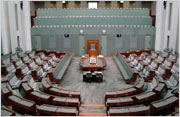Gaps in the Australian healthcare system could be highlighted and tackled using research from The Australian National University.
Dr Francesco Paolucci, Fellow at the Australian Centre for Economic Research, studied how policymakers arrive at decisions on key health policy issues, with a view to identifying gaps.
“Healthcare policy is often done in an ad hoc manner. It is also often not clear what the goals of policy are, and sometimes programs or services that are being set up by policymakers with ‘good’ intentions have unexpected or undesired results on equity and efficiency,” he said.
“We wanted to find out what policymakers’ preferences were for equity and efficiency – what criteria they used to determine whether or not a service should be reimbursed or subsidised, and whether healthcare access should be prioritised according to patients’ age, income or other health status characteristics.
“To address these issues, we developed a questionnaire to find out what policymakers think needs to happen in their healthcare system. In this paper we measured policymakers, but it could easily be used for society as a whole.
“From the results derived from the questionnaire we can then create a hypothetical optimal package of healthcare services for individual countries, and measure this against their existing healthcare services to find the gaps, or compare their health system with other countries.”
The study surveyed health policymakers in five countries – Brazil, Cuba, Ghana, Nepal and Norway. The research team has expanded the study to include five more countries – China, Spain, Austria, Tanzania and Uganda.
Dr Paolucci said the scheme could be rolled out in Australia to help society and policymakers set their priorities in healthcare policy.
“It could help our decision makers identify and address the tensions between equity and efficiency in our healthcare system, particularly in an environment in which the proportion of out-of pocket expenditures has been going up and public finances are increasingly tight,” Dr Paolucci said.
“In the end what I hope to provide are instruments for decision makers to use in implementing healthcare policy in a more rational and holistic approach that genuinely reflects societal preferences, rather than in an ad hoc manner based on political scenarios or economic circumstances.”
Dr Paolucci collaborated with researchers from the United States, the United Kingdom and the Netherlands.
The research is available online.







